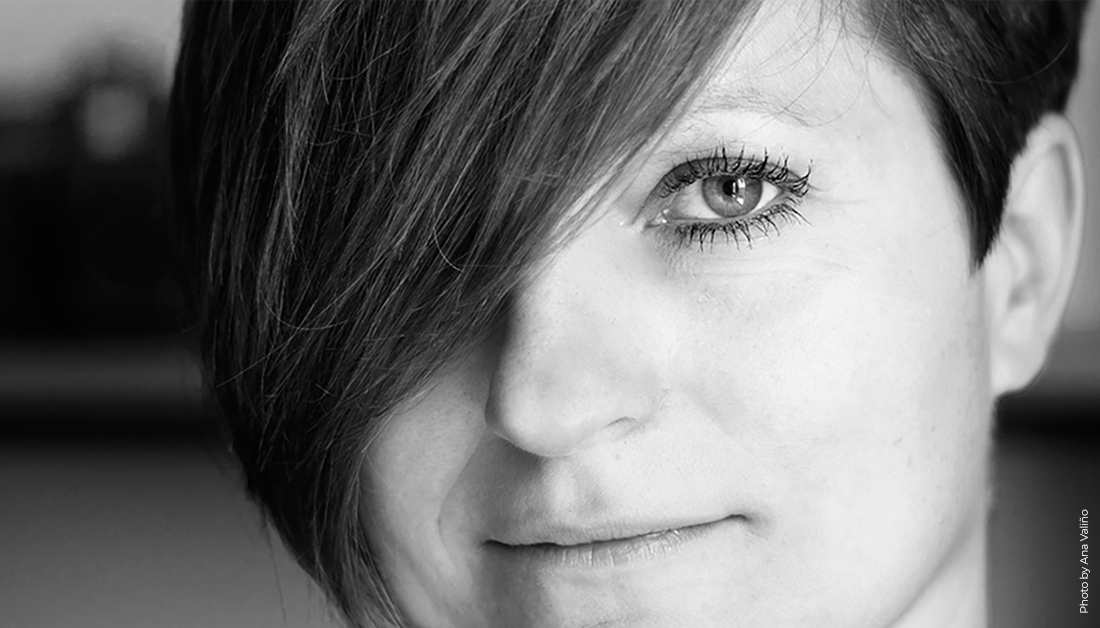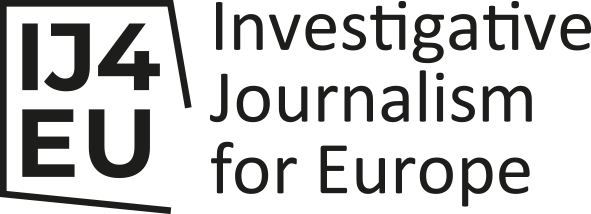Since Russia’s full-scale invasion of Ukraine, Poland has taken in more than 1.5 million refugees. Yet this solidarity belies a less generous attitude toward asylum seekers from elsewhere in the world, as is played out daily on the Polish-Belarusian border.
Welcome to The Jungle, an investigation into the dire conditions facing migrants and refugees trapped in harsh terrain far from the glare of media scrutiny. Two Polish journalists — Hanna Jarzabek and Eliza Kowalczyk — spent months exposing the dark side of Polish migration policy there.
Since November 2021, thousands of people, mainly from far-flung war zones or repressive states, have attempted to cross the Bialowieza Forest, the last primaeval forest in Europe. Nicknamed “The Jungle”, the forest is a terrifying place for anyone unprepared for the harsh climate of northeastern Europe.
“The border between Poland and Belarus has been at the centre of a humanitarian crisis — a term I find more correct than migration crisis — since the summer of 2021,” Jarzabek told the International Press Institute in an interview.
“I was in Spain at the time, following what was happening with refugees from Africa and the Middle East who were rejected at the border and often abandoned in the forest, but it was when the war in Ukraine started that I decided to do this documentation project.
“I was struck by how different the migration policy was for Ukrainians compared with people fleeing other wars but arriving from other parts of the world.
“It is important to say that the response of Polish institutions, and even more so of civil society, was extraordinary with respect to people fleeing Ukraine, receiving health insurance, a legal status allowing them to go to school, work, receive social benefits, and the people who were hosting them were receiving aid from the state.
“At the same time, however, there were refugees like them, from Africa and the Middle East, but they were treated completely differently.”
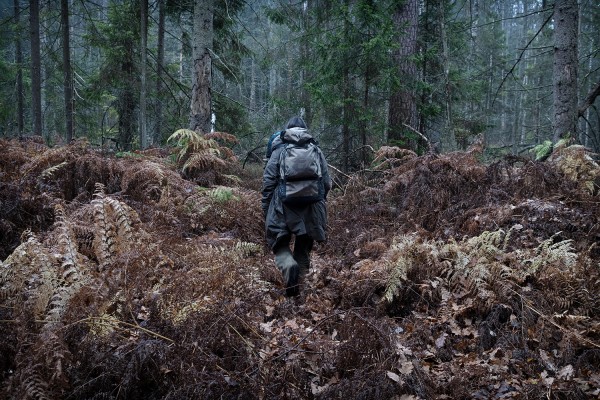
A volunteer brings clothes and food to refugees hiding in the forest. Sometimes volunteers have to go in the middle of the night and get to places that are extremely hard to reach. Photo by Hanna Jarzabek
‘A relationship of trust’
Joining forces with Kowalczyk for the project, Jarzabek began with in-depth research. The two were helped by a €15,600 grant from the Freelancer Support Scheme, one of two grant programmes offered by IPI’s Investigative Journalism for Europe (IJ4EU) fund.
“As a photographer and photojournalist, I needed to create a mental map to help me work in the field, identifying key players and interesting voices, contact them and build a relationship of trust with them, choosing the focus, the approach, and which photos could best tell the story of this situation,” Jarzabek said.
“I started interviewing the people living in the region and the informal groups of volunteers who are involved in bringing humanitarian assistance to these refugees scattered in the woods at the border. And I found confirmation that there is no help or commitment from the institutions or large non-governmental organisations, which prefer not to be involved in this story.
“So I decided to add a part of data analysis to the project, because those provided by the Polish authorities are not clear and when I asked for explanations, I did not receive any.”
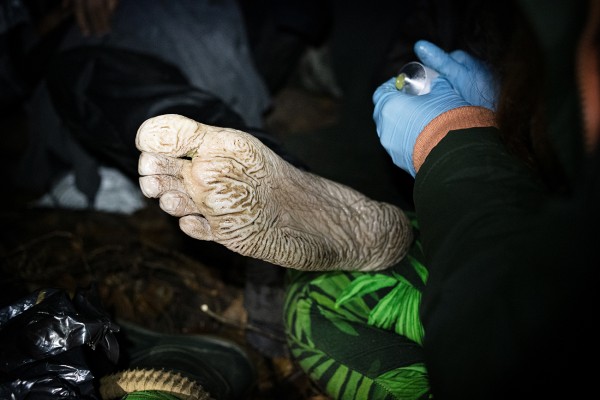
Trench foot, a fungal infection that affects the feet, is one of the most common health problems among refugees attempting to cross the Białowieża Forest. It arises when the feet are exposed to low temperatures and high humidity for long periods of time. Refugees who spend extended periods in the forest often experience health problems due to the harsh conditions they face. The lack of potable water forces them to drink from polluted sources, such as swamps, which causes severe digestive problems and diarrhea. Trench foot is also common among migrants who cross swamps and rivers without being able to change clothes or wash. In summer, dehydration is common, while hypothermia is a constant threat during winter. Photo by Hanna Jarzabek
Different responses
The data painted a picture of two vastly different responses to human displacement. So did the narratives surrounding the crises. While domestic and international media celebrated the Polish reception of Ukrainian refugees, little was said about what was happening at the frontier with Belarus.
Here, asylum seekers caught by Polish border guards are routinely “pushed back” into Belarus, abandoned at night deep in the forest, the investigation revealed.
in July 2022, Poland finished building a wall to keep migrants and refugees out — though its effectiveness has proved iffy. Meanwhile, the government has criminalised any form of humanitarian aid in the region, branding do-gooders “idiots and traitors”.
Internazionale in Italy publishes today a report about the situation of refugees at the eastern European border. With a great text of @Katarzyna Przyborska and my photos. The situation continue to be harsh and important to speak about! pic.twitter.com/WaSSAyYBGa
— Hanna Jarzabek (@HannaJarzabek) April 6, 2023
‘Lives depend on their efforts’
“It has taken time to build up a relationship of trust with the local population and the volunteers who rescue these people,” Jarzabek said.
“There is a lot of distrust in the media, not least because those close to the government in Poland feed the government’s manipulation, which presents these volunteers as people who facilitate the illegal entry of potential criminals or terrorists, completely distorting reality.
“These people are under great pressure and many of them have had a psychological breakdown. They are not equipped and trained professionals. They do everything out of humanity, but under very difficult conditions. And they are under pressure from the press and the authorities, who accuse them of endangering Poland’s security.
“Yet they do not stop going into the woods and bringing relief and help, because they know that human lives depend on their efforts. Sometimes even just to recover the bodies and give them a decent burial.”
Through the investigation, Jarzabek concluded that Poland’s heavy-handed response on the Belarusian border was “a form of institutional racism, which does not only affect Poland, but also Greece, Italy, Spain and the European Union in general”.
She added: “The Ukrainian crisis showed that it is possible to give a systematic response, finding the resources, to humanitarian crises, but for people coming from Africa and the Middle East, this does not happen. This is discrimination, between refugees who have the same rights.”
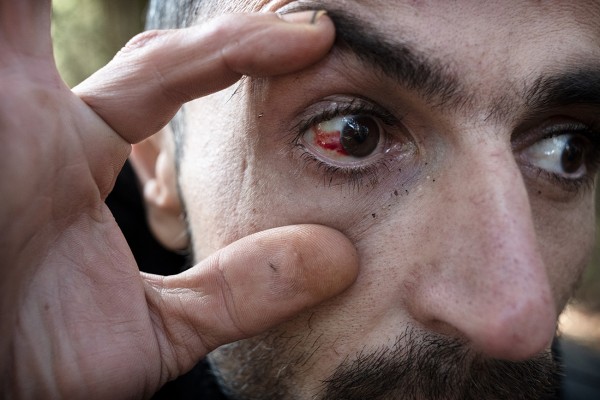
Mohammad, a 30-year-old refugee from Yemen, shows the injuries to his eyes caused by beatings by the Belarusian police. Mohammad arrived in Minsk together with his two friends, Khalid and Salim, both 23 years old. They had spent two months in the forest and had been returned to the Belarusian side twice by Polish border guards. The first time, Polish border guards smashed their phones and fired tear gas into their eyes, leaving Khalid without visibility for several hours. On this last occasion, the refugees used a ladder to jump over the fence and slipped down the Polish side. Photo by Hanna Jarzabek
‘Families torn apart’
Despite their extensive research, Jarzabek said it was only by going into the field that she and Kowalczyk could gauge the severity of the situation.
“The informal networks of people rescuing refugees in the woods confirmed to me how dramatic the situation is, and now, compared to when I finished the work, it has worsened,” she said.
“The construction of the border wall, which is up to 5.5 metres high, pushes the refugees to try to climb it, sustaining injuries in falls, and seeking increasingly dangerous routes. Moreover, the violent and illegal rejections are even crueller than I could have imagined.
“Many of the refugees are exhausted and have psychological problems. Furthermore, families are torn apart during these illegal operations that do not respect international law.
“I remember an Iranian woman who was separated from her husband. She was hospitalised, while he was brutally sent back to Belarus and she did not hear from him for months. The same for a Yemeni woman separated from her relatives.”
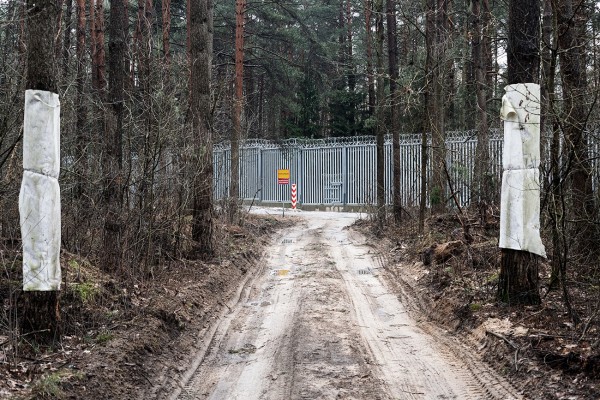
The anti-migration fence, with a height of 5.5 meters and a length of 183 kilometers, recently built by the Polish government on the border between Poland and Belarus. Photo by Hanna Jarzabek
‘You have to protect people’
The investigation was a delicate job in a difficult context, both on a human and professional level.
“You have to protect people and I decided not to take photographs that could identify those who are part of the informal solidarity network, choosing to take a series of hand portraits,” Jarzabek said.
“I spent a lot of time with them, in particular with Grupa Granica (the Border Group). I worked to document what happens to people, but also to the environment, where the construction of the wall impacts one of Europe’s most pristine regions. And also on a personal level, it was a strong experience.
“The stories are many, but the story of a Syrian boy particularly struck me,” Jarzabek continued. “December 2022, minus 11 degrees. There was a report of a missing Syrian refugee. I left with two volunteers to look for him. He was in a very complicated and difficult position to reach. When we finally found him, the doctor who was with me ascertained that he was alert but could not move, being in the second degree of hypothermia.
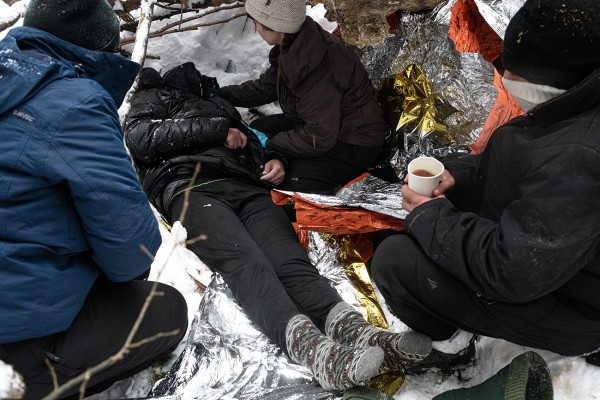
Two volunteers, one of them a doctor, provide assistance to Y.K, a Syrian refugee in a state of second-degree hypothermia. At that time, the temperature was 11 degrees below zero. Photo by Hanna Jarzabek
“They put him in the car, where they had no rescue equipment, making fun of us and showing no empathy for that boy. I was frightened at the idea of him being turned away without help and it was only thanks to the intervention of two deputies that I heard from him.
“And on my skin, I saw the media manipulation, with the border police saying they rescued him despite the difficulties created by the volunteers. Absurd, but very common.”
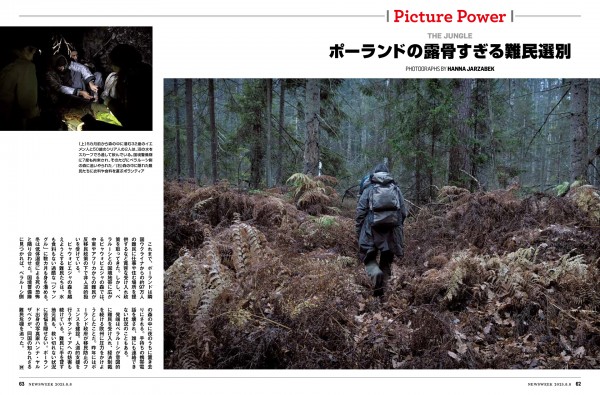
The first page of a photo story published by Newsweek Japan.
The work of Jarzabek and Kowalczyk has resonated widely, with stories published all across Europe and as far away as Japan. Exhibitions will feature the project’s photojournalism in Spain, Germany and Brazil.
“What I wanted was to give visibility to what happens on the border between Poland and Belarus,” Jarzabek said. “People who see my work ask me if the situation has now been resolved and this explains how much media silence there is about this story, which also tells of a general problem in Europe of institutional racism of reception and which I hope can help stimulate a debate within Poland and internationally.”
She concluded: “I am very happy with how people who look at my work ask me how to help the informal solidarity networks. Because creating connections is always a positive result.”
For more on this IJ4EU-supported investigation, see The Jungle.
Hanna Jarzabek will take part in a workshop on the ethics of photojournalism at the IJ4EU UNCOVERED Conference in Brussels on October 12, 2023.

